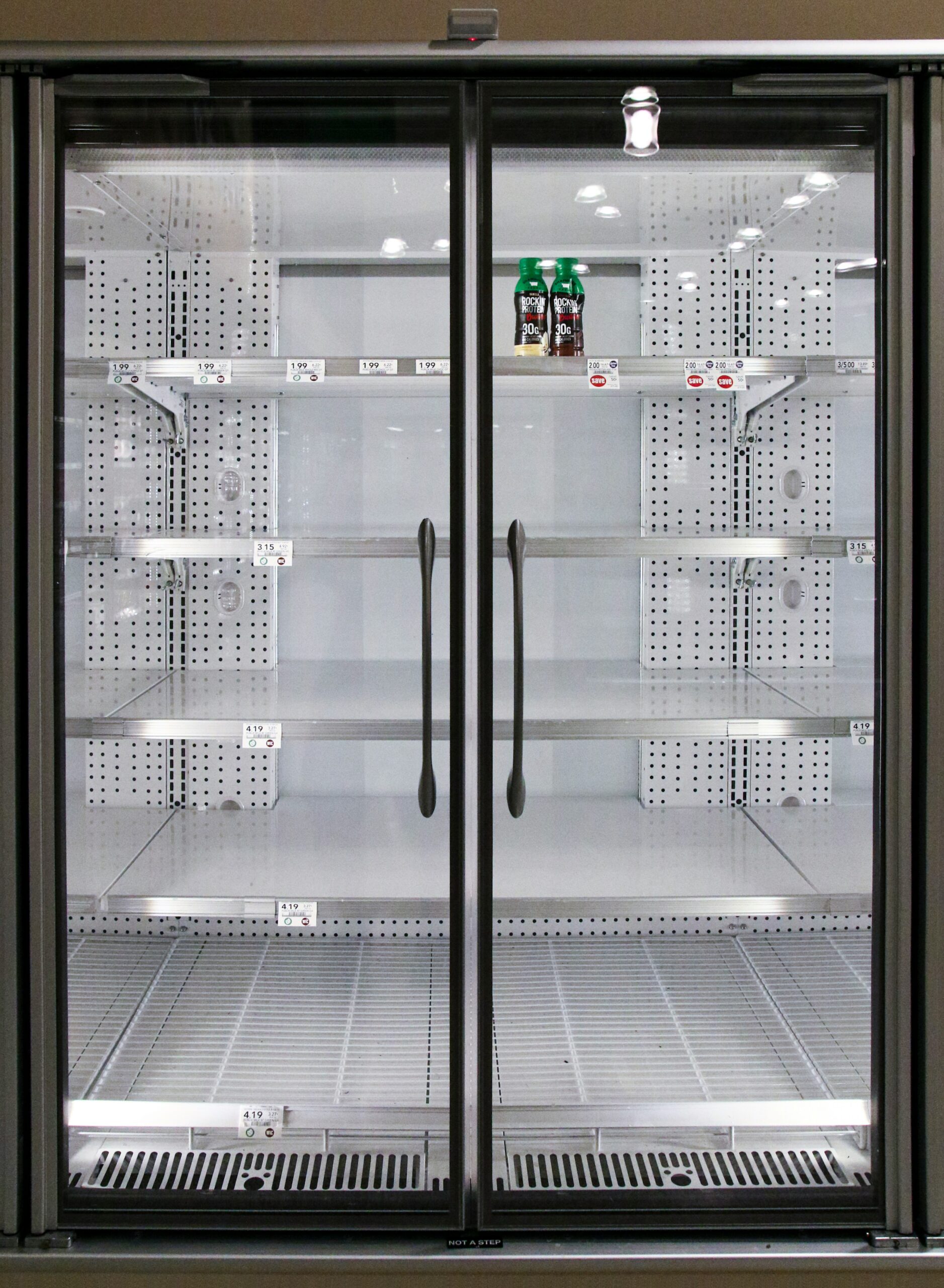
Trakref
Scope 1 Emissions: A Quick and Easy Reporting Program Guide

Reporting and measuring GHG emissions of your air conditioning systems
This post is a general guide to mastering refrigerant emissions reporting. It's a quick and easy (not dirty!) guide to HVAC/R and Scope 1 Emission.
Above all, realize this: reporting and compliance around HVAC/R can feel complicated, but it's not as complicated as we make it sometimes.
Let's walk through some of this right now.
What are Scope 1 Emissions, and how do they differ from other emissions?
Scope 1 emissions are included in your Environmental, Social, and Governance (ESG) reporting. They are direct emissions from owned or controlled sources. "Emissions" generally refers to carbon emissions, and there are both direct and indirect emissions. The entire landscape here refers to the greenhouse gas emissions inventory.
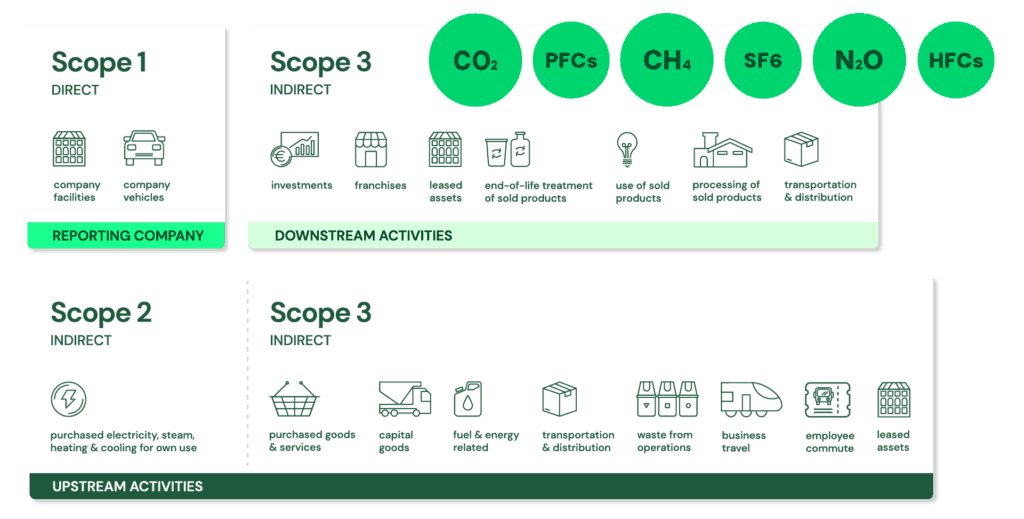
When refrigerants leak from your AC and refrigeration equipment, they are referred to as “fugitive emissions.” Broadly defined these are leaks from greenhouse gases (e.g. refrigeration, air conditioning units). Refrigerant gases can be a thousand times more dangerous than average CO2 emissions. Companies are encouraged to report these emissions – and, in fact (we’ll address this later), it’s a massive component of investing these days.
The EPA looks at greenhouse gas protocol scope emissions across the value chain in this way:
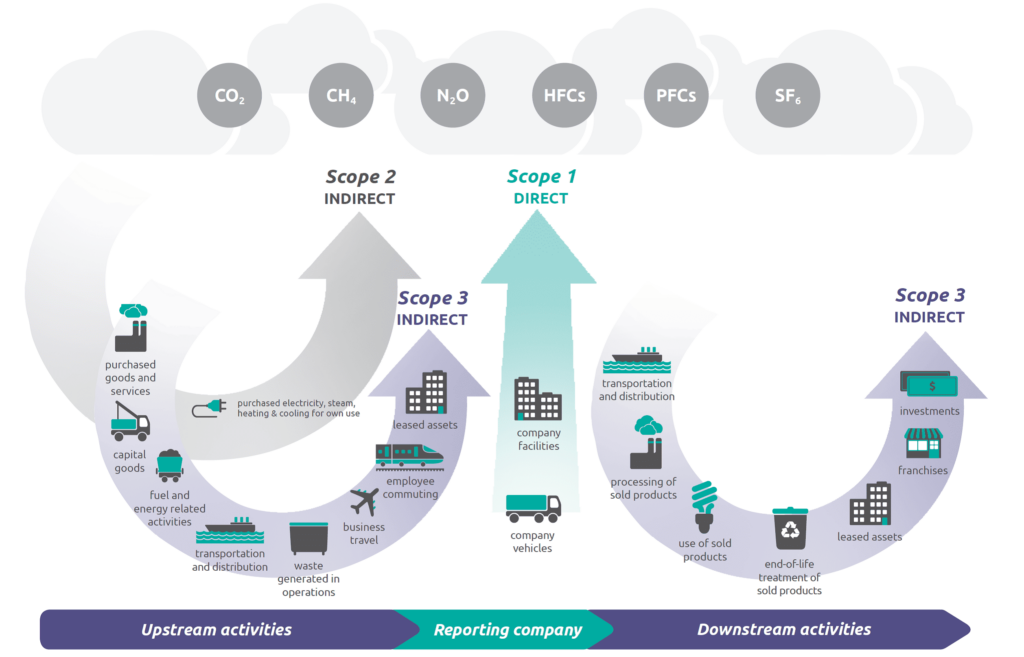
For reference, EPA, Scope 2 emissions are "indirect GHG emissions associated with purchasing electricity, steam, heat, or cooling. Although scope 2 emissions physically occur at the facility where they are generated, they are accounted for in an organization’s GHG inventory because they result from the organization’s energy use."
Scope 3 emissions are "the result of activities from assets not owned or controlled by the reporting organization, but that the organization indirectly affects its value chain. Scope 3 emissions include all sources not within an organization’s scope 1 and 2 boundaries."
This post focuses on Scope 1, fugitive emissions, not upstream and downstream emissions related to Scopes 2 and 3. That will be a huge chunk (50% or more) of your reporting, and it's a big piece of HVAC/R management and reporting in general.
What are the elements of Scope 1 emissions reporting?
Emissions inventory: This accounts for direct emissions from owned or controlled sources, typically expressed in metric tons of carbon dioxide equivalent (CO2e). This involves tracking emissions from maintenance work and other processes like semiconductor production processes, transmission line management (SF6), etc.
Emissions factors are used to calculate the CO2e emissions associated with different refrigerants. These factors can vary depending on the type of fuel, the type of process, and the location of the emissions source. Existing common refrigerants have emissions factors that range between 1-4 tons of carbon per lb.
With the weight of gas used and the proper factor, you now need to calculate your carbon footprint, so you will need to use a GHG reporting framework: These include the Global Reporting Initiative (GRI), the GHG Protocol, or the Sustainability Accounting Standards Board (SASB). These frameworks guide reporting direct emissions and other ESG-related data.
Emissions reduction targets: Many organizations set emissions reduction targets as part of their ESG reporting and long-term strategy. These targets may be based on a specific percentage reduction in emissions or other factors, such as intensity-based targets.
Verification and assurance: Verification and assurance are essential components of Scope 1 emissions reporting, as they provide third-party validation of emissions data and help ensure accuracy and transparency. Some organizations engage independent auditors to provide verification and assurance of their ESG reporting.
Every company's sustainability journey needs to include some form of GHG accounting, an essential component of an organization's sustainability reporting efforts. By quantifying and reporting direct emissions from owned or controlled sources, organizations can identify opportunities to reduce emissions, set emissions reduction targets, and demonstrate their commitment to sustainability.
OK. So why does Scope 1 emissions reporting, then?
Scope 1 emissions are typically the most controllable and easiest to measure of an organization's greenhouse gas emissions. Therefore, many companies report on their Scope 1 emissions as part of their ESG reporting to provide stakeholders with information on the company's direct environmental impact.
As for why organizations and their leaders tend to care about Scope 1 emissions increasingly, the answer is not “companies are getting more woke.” Well, potentially, that’s part of the answer, yes. The reality is more nuanced, though.
Investor demand: Many investors are prioritizing ESG factors in their investment decisions. By reporting on their ESG performance, companies can attract and retain investors who prioritize sustainability and social responsibility.
Competitive advantage: Companies prioritizing ESG performance can gain a competitive advantage by differentiating themselves from their peers. ESG reporting can help companies demonstrate their commitment to sustainability and social responsibility, enhancing their reputation and building trust with customers and other stakeholders.
Regulatory compliance: ESG reporting is increasingly required by regulators worldwide, particularly in the EU, where companies with more than 500 employees must report on ESG factors as of 2022. The U.S. is a bit behind, but there are increasing regulatory elements under the Biden administration. Companies can avoid penalties and other legal risks by staying ahead of these regulatory requirements.
Risk management: ESG factors can pose significant risks to companies, including reputational, operational, and financial risks. ESG reporting can help companies identify and mitigate these risks, protecting their long-term sustainability and profitability.
Transparency: ESG reporting can help companies demonstrate transparency and accountability to stakeholders, including customers, employees, investors, and regulators. Companies can build trust and credibility with stakeholders by providing precise and comprehensive information on their ESG performance.
Overall, Carbon emissions reporting and more extensive ESG reporting are essential to corporate executives because they can help companies attract and retain investors, gain a competitive advantage, comply with regulations, manage risk, and demonstrate transparency and accountability to stakeholders.
What experts say about managing greenhouse gas emissions
This is what you’ll commonly hear from all corners of the ESG and Scope 1 emission thought leadership landscape:
- Build a team
- Define the responsibilities
- Train the team
- Set goals
- Establish procedures
- Start engaging, monitoring, and improving
Sounds simple enough, right? Uh, it’s not. Everything in that list is essential, for sure. And everything is a best practice. But managing Scope 1 emission is deeper than that. It requires:
- Often challenging the status quo
- Taking on new challenges (and new regulations)
- Remaining focused on the ultimate goal
Honestly, one of the reasons why Scope 1 emissions reporting can be challenging for teams is their technology. This is a lot of stuff to manage, and it’s not always (unfortunately) top of mind for people who need to manage ESG reporting. Over the past year, we’ve talked to dozens of larger companies where ESG work is still done in overlapping, meandering spreadsheets. When you’re talking about tons (literally) of emissions from a company, it can’t be managed loosely in spreadsheets. There’s too much confusion, and the wrong data gets reported. It’s a giant mess.

Software may eat the world, but is it always saving the world?
So, technology – which has been hailed as a savior in the Scope 1 emissions and ESG space – is oftentimes a barrier. Weird. More on that later in the post.
A quick start action plan around Scope 1 emissions
The plan below is for fugitive direct emissions around HVAC/R, which will generally be 50% of your Scope 1 emission reporting.
Step 1: Understand what exactly needs to be done here
Identify sources of Scope 1 emissions: The first step in tracking and managing Scope 1 emissions is to identify the sources of emissions within the organization. This could include emissions from boilers, furnaces, vehicles, and other equipment that the organization owns or controls.
Establish a baseline: Once the sources of emissions have been identified, the organization should establish a baseline for its emissions. This can be done by collecting data on the amount of energy consumed and the emissions produced by each source.
Monitor emissions: The organization should establish a system for monitoring its emissions on an ongoing basis. This could involve installing meters or other monitoring equipment on each emission source, or using data from energy bills or other sources to estimate emissions.
Set reduction targets: Once the organization has established a baseline and is monitoring its emissions, it should set targets for reducing total emissions over time. These targets should be ambitious but realistic and should consider the organization's business needs and operational constraints.
Implement reduction measures: To achieve its reduction targets, the organization should implement a range of measures to reduce its emissions. This could include investing in energy-efficient equipment, switching to renewable energy sources, optimizing its operations to reduce energy use, and encouraging employees to adopt sustainable practices.
Monitor progress: The organization should monitor its progress in reducing its emissions on an ongoing basis, using the same monitoring system established above. This will enable the organization to identify areas where further action is needed and to make adjustments to its approach as necessary.
Report on progress: Finally, the organization should report on its progress in reducing its emissions as part of its ESG reporting. This will help to demonstrate the organization's commitment to sustainability and transparency, and to engage stakeholders in its efforts to reduce its environmental impact.
Step 2: Leverage existing resources
You already have a team, so use their existing skills and determine the following three things:
- How many HVAC/R systems do you have, and what refrigerant is in them? Your team likely already knows details related to larger (over 50 lb.) systems, but now you need to know the total charge of all systems, even those under 50 lbs. A good rule of thumb is that your appliances over 50 lbs. are about 5-15% of your total refrigerant inventory. So if you have one 50-lb. system, you have between 350-1000 lbs of total refrigerant on site.
- How many appliances are you managing? Is it 100, 1,000, or 10,000?
- What is the “vintage” or age, the annual leak rate, and how important or critical is it to operations.
You can lean on your team to understand your company's activities. They may not know everything, but if they know where the systems are and what information is needed, and that's the best place to start.
Also, remember that your roadmap here will change, and possibly very frequently; you may not have the same scope this year as next because emissions are not a static reporting situation.
Step 3: Understand program development and life cycle management
A deeper awareness of materiality and double materiality is required to operationalize management over the refrigerant life cycle.
Materiality refers to the significance of an issue or factor to an organization and its stakeholders. It involves identifying and prioritizing issues that have a material impact on an organization's operations, financial performance, and reputation.
Double materiality, on the other hand, takes into account the impact of an organization's operations on both the environment and society – as well as the impact of external factors such as climate change on the organization.
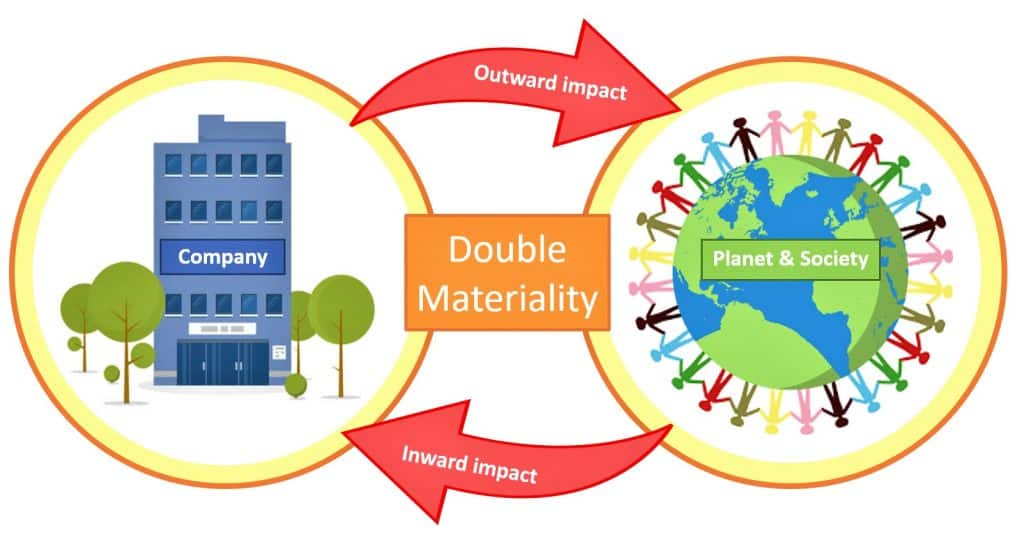
An effective quick start program for refrigerant management requires organizations to consider the materiality of refrigerant-related issues, including the impact of refrigerant leaks and emissions on the environment and the potential financial and reputational risks associated with non-compliance.
Starting simple and getting a quick action plan in place can help build momentum and create a culture of action within your team. By breaking down complex goals into manageable tasks and focusing on quick wins, you can build confidence and create a sense of accomplishment – which can motivate your team to take on more challenging tasks and work towards larger goals over time. As you achieve early successes and gain momentum, you can gradually scale up your efforts, invest in more resources, and take a more comprehensive approach to manage refrigerants and improving sustainability performance.
You can start these three steps today, and within a month, you will be more aware, better prepared, and notice a shift in posture.
How does TrakRef help with Scope 1 emission management?
Many companies are still just catching up on understanding the significant carbon emissions caused by refrigerants. Scope 1 emissions reporting, ESG reporting in general, or social cause reporting. They don’t know how to do it properly, and it falls into poorly-managed, poorly-contextualized processes that use old tech.
Ideally, what you want from any refrigerant management and Scope 1 emission reporting tool is:
- A way to see and understand the data
- Task management
- Some level of automation
- Clear reporting capabilities
There are more bells and whistles that help out, but those are the core things you need to effectively report Scope 1 emissions.
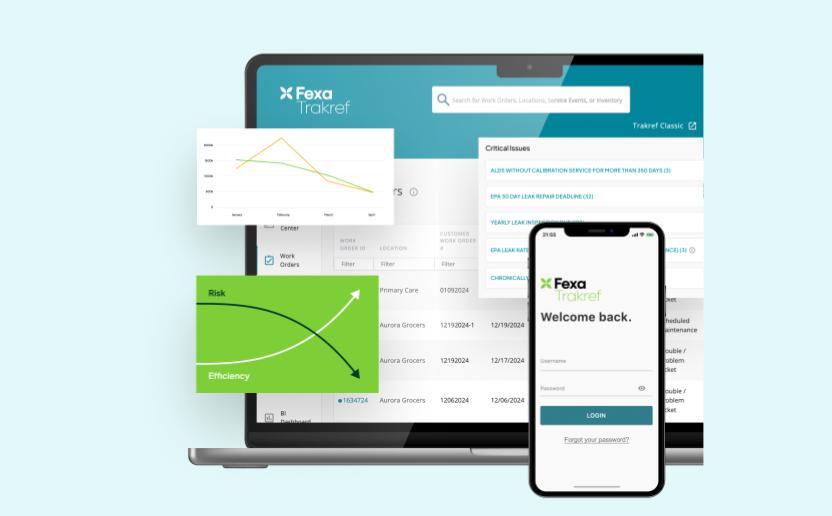
Refrigerant tracking: Trakref provides a centralized platform for tracking refrigerant use across an organization. This includes tracking the amount of refrigerant used, the location of each refrigerant-containing device, and the dates of any maintenance or service activities. By tracking refrigerant use in this way, Trakref can help organizations identify opportunities to reduce their refrigerant use and associated emissions.
Emissions calculations: Trakref can calculate an organization's refrigerant-related emissions based on the type and amount of refrigerant used, as well as other factors such as equipment age and efficiency. These emissions can then be reported as part of the organization's overall Scope 1 emissions.
Leak detection: Refrigerant leaks are a common source of emissions in many organizations. Trakref can help organizations detect and address refrigerant leaks quickly, reducing the amount of emissions released into the atmosphere.
Compliance tracking: Trakref can help organizations stay compliant with regulations related to refrigerant use and emissions, such as the Environmental Protection Agency's (EPA) Refrigerant Management Program. By staying compliant with these regulations, organizations can avoid fines and penalties and demonstrate their commitment to sustainability and environmental responsibility.
Reporting: Trakref provides a range of reporting capabilities, including reports on refrigerant use, emissions, leak rates, and compliance. These reports can be used to inform decision-making and to demonstrate progress in reducing emissions and improving environmental performance.
Overall, Trakref can be an important tool for organizations looking to manage their Scope 1 emissions related to refrigerant use. By providing a centralized platform for tracking refrigerant use, detecting leaks, and calculating emissions, Trakref can help organizations reduce their environmental impact and meet their ESG goals.
The overall landscape of Scope 1 emissions
Many companies were only using under-50 lb. appliances to avoid EPA reporting. Now that more appliances need to be reported, you need to change your thinking and approach. Additionally – and we’ll be writing more about this in 2023 – there are proposed bans in the EU and beyond that would eliminate most refrigerant blends, and that will have drastic impacts on reporting and operations as well.
Committing to advancing your own knowledge involves staying informed – Trakref can help there – about emerging technologies and best practices that can help your company reduce its emissions.
Overall, you want to identify and capitalize on opportunities to reduce your Scope 1 emissions before it becomes a legal requirement or before your competitors improve their reporting – which could lead to lower costs of capital or better shareholder value for them instead of you.
If you’re out in front on Scope 1 emissions and general ESG trends, you can gain a competitive advantage, attract new capital and customers, and contribute to a more sustainable future.
Ultimately, refrigerant management is a critical component of Scope 1 emissions reporting as it directly impacts the emissions of greenhouse gases such as HFCs and PFCs. Effective management of refrigerants helps to minimize leaks and releases, reducing the overall impact on the environment and contributing to a company's sustainability goals. Proper refrigerant management is often a requirement for compliance with government regulations, making it a key consideration for companies seeking to operate in a responsible and sustainable manner.
If you need help with any of these topics or Scope 1 emissions planning and reporting, let us know!



